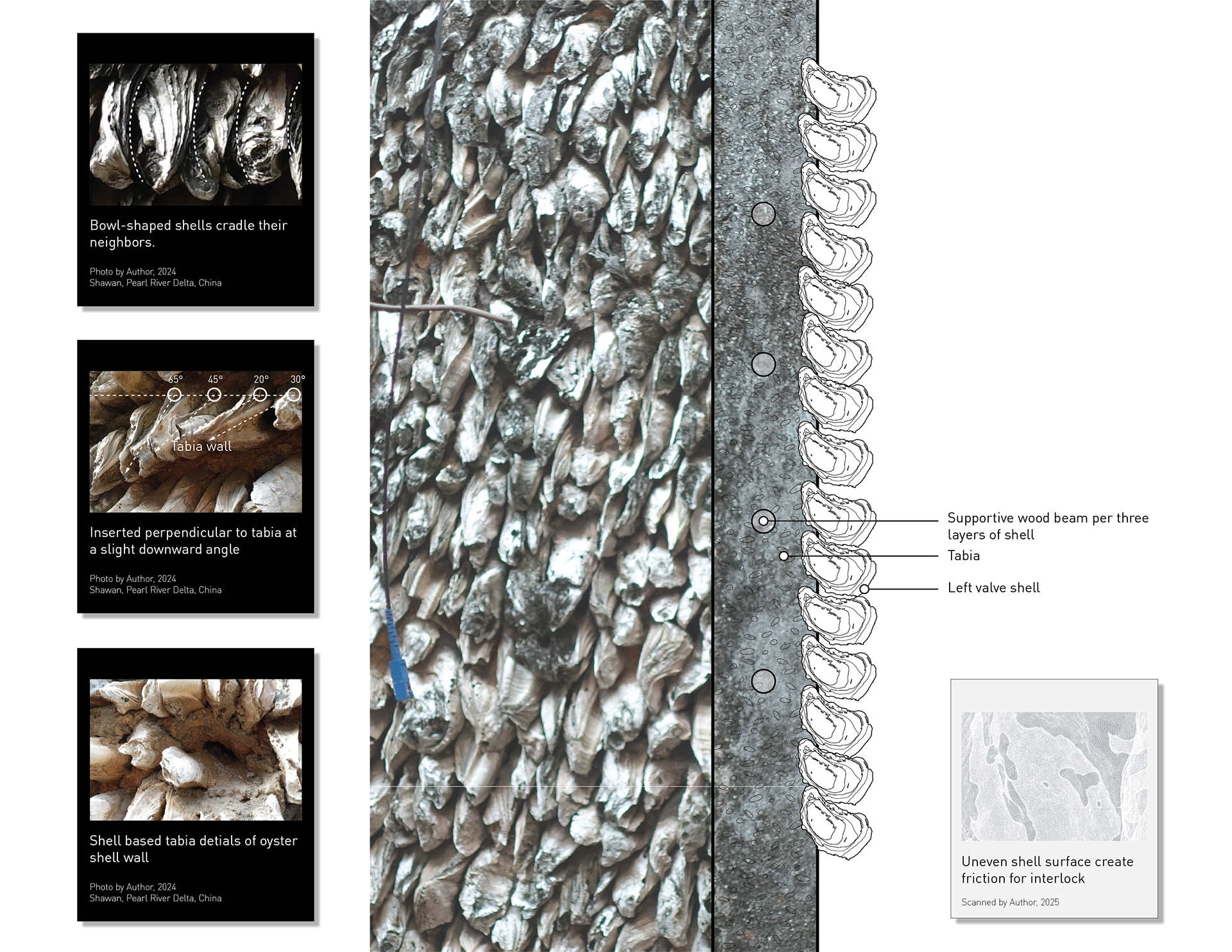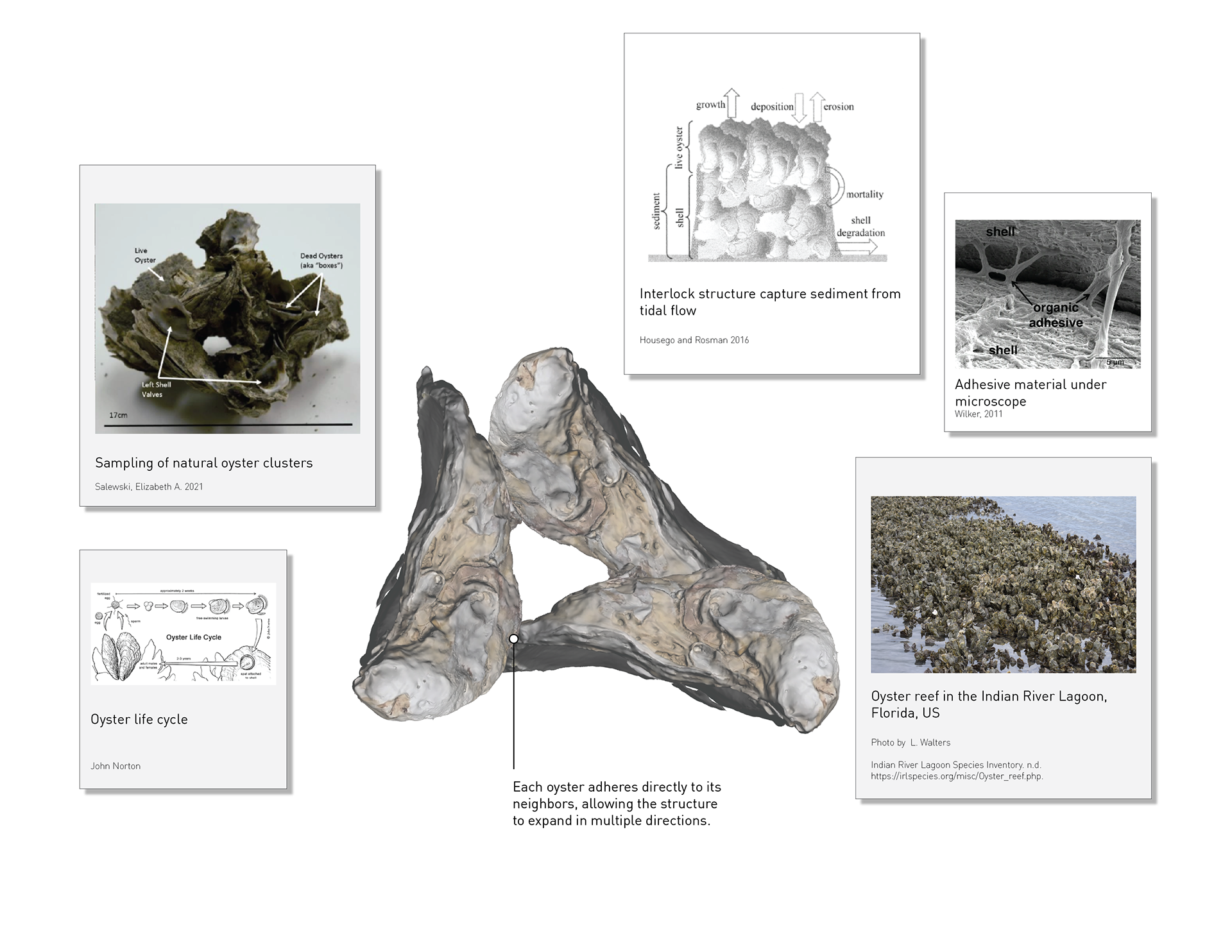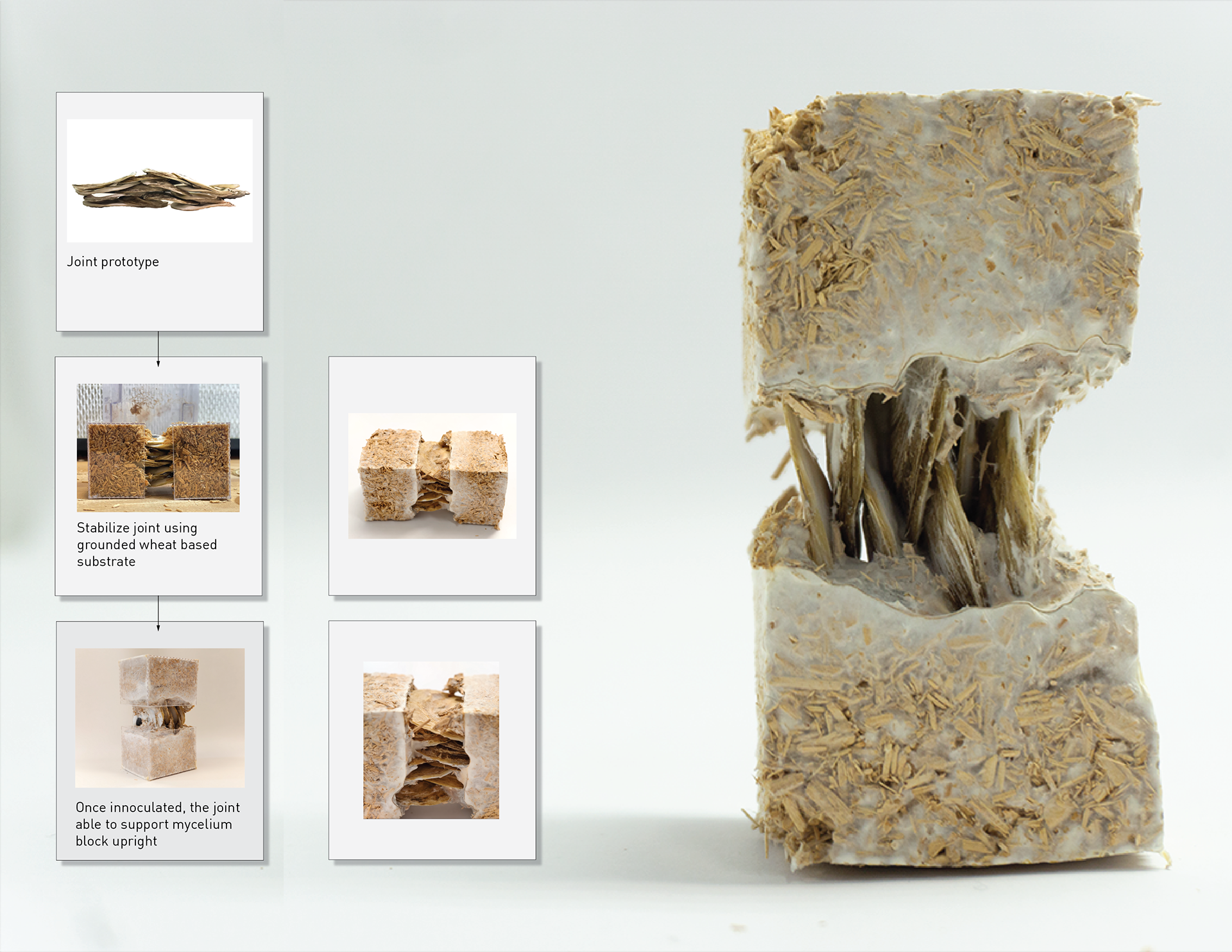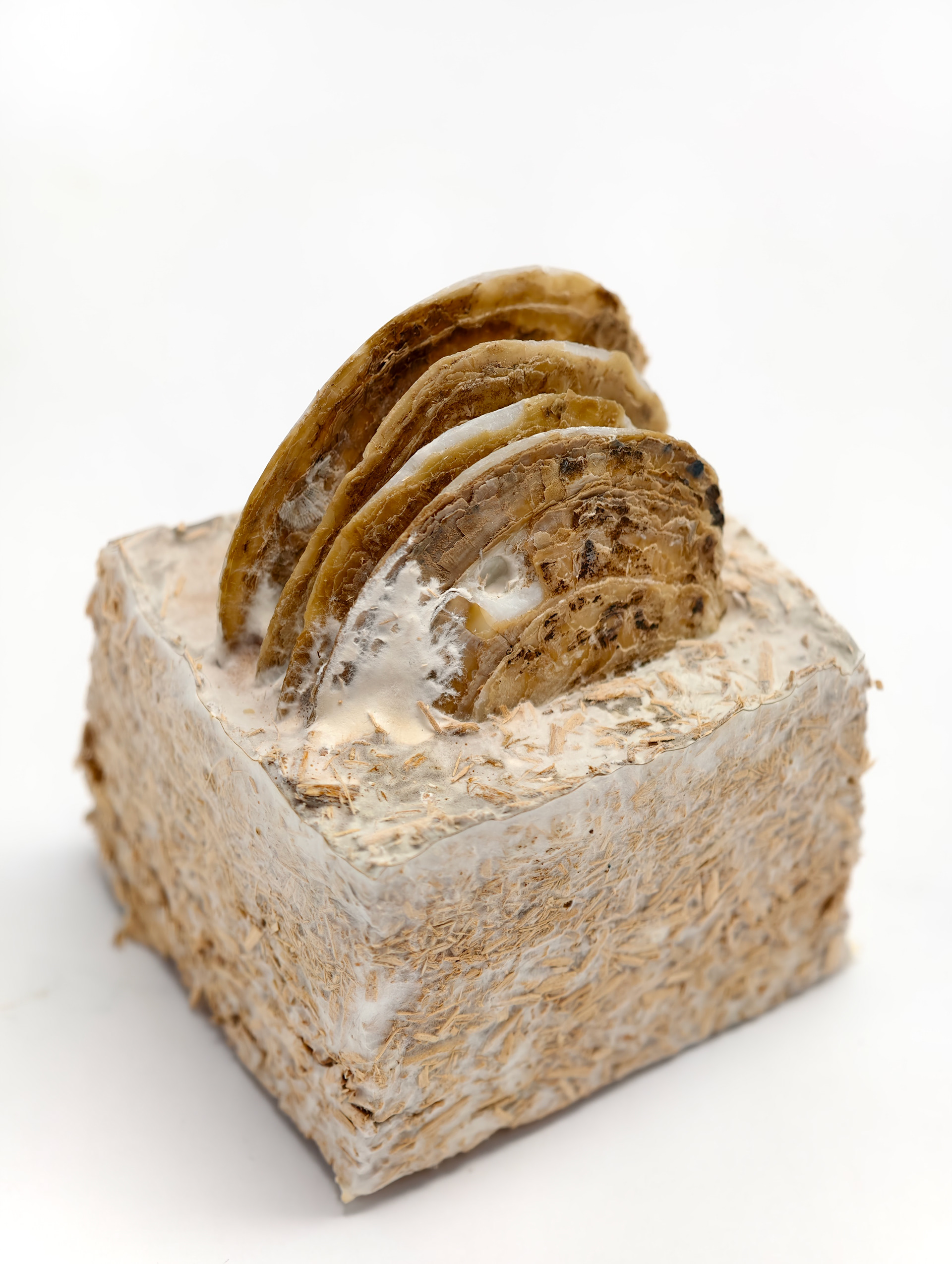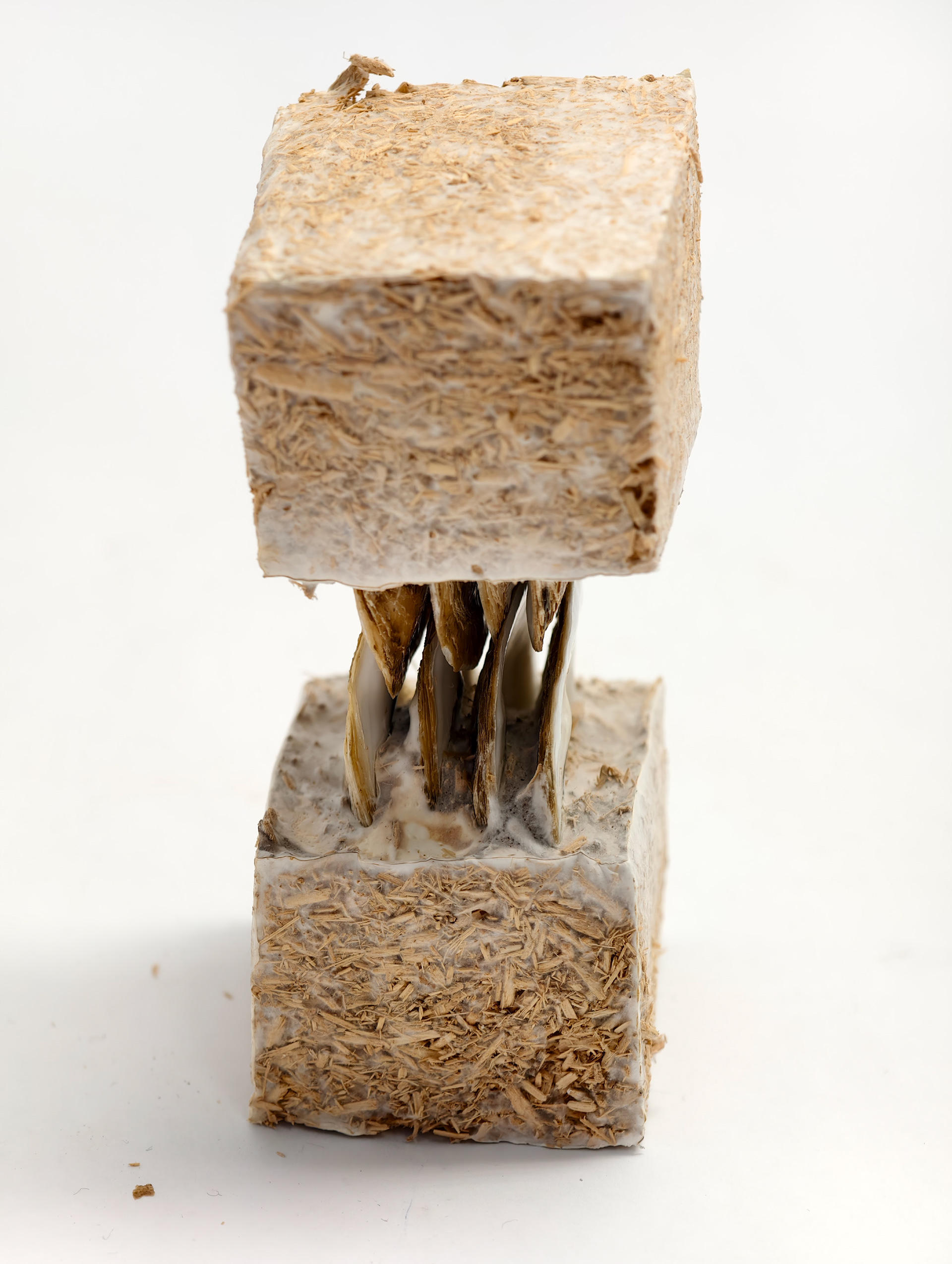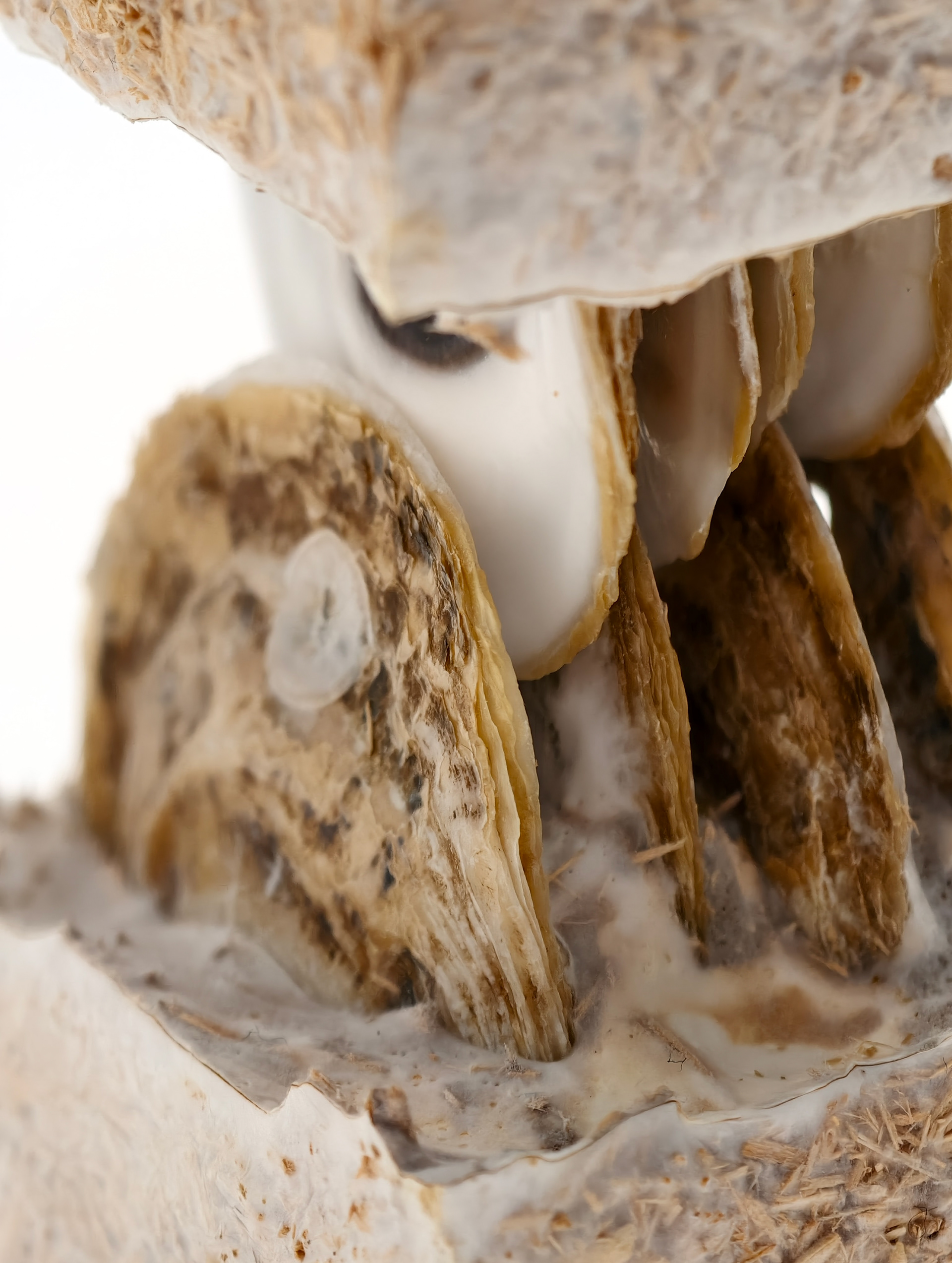Oyster shells have long served as vernacular construction materials in coastal regions around the world. Their role has ranged from substitute cementitious ingredients, exterior wall coatings to structural reinforcement. Beyond human use, oysters naturally form stacked and stabilized reef structures in dynamic tidal zones. Their shape and behavior are structural by necessity, shaped by life cycles that respond to the living environment. This field note traces the historical use of oyster shells in architecture, examining both manmade and natural formations, and explores their reintroduction into modular interlock systems. Centered on interlocking assemblies stabilized by mycelium composites, the exploration expands the discussion about how the shell’s irregular curvature can inform new modular construction logics grounded in natural formation processes.



